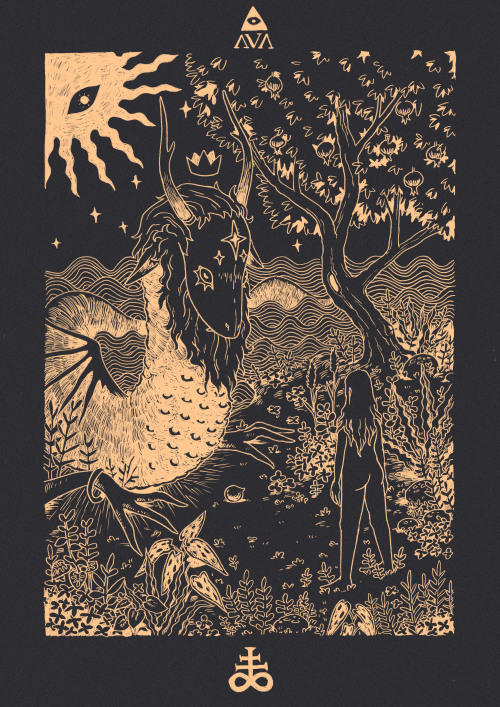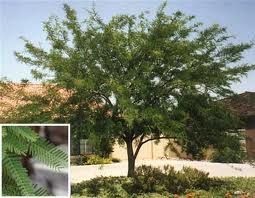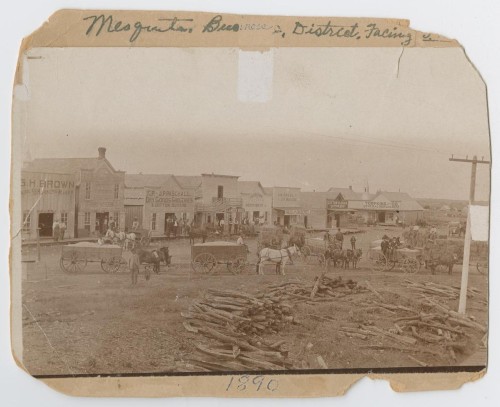Lammas Resource Masterpost
Lammas Resource Masterpost

A collection of categorized posts for your Lammas needs! What is Lammas? [X] Lammas is generally celebrated on August 1st in the Northern Hemisphere and February 1st in the Southern Hemisphere. Also called/merged with Lughnasadh.
The Basics:
Celebrate Lammas!
Lammas or Lughnasadh?
Lammas correspondences / more correspondences / even more
The witch at Lammas (history)
A solitary Lughnasadh celebration
Celebrating Lughnasadh in the kitchen and at home
Lammas: easy ways to celebrate / more ways to celebrate / even more
Subtle ways to celebrate
Lammas Crafts:
Leaf envelopes
Corn husk dolls
Lammas Recipes:
Lughnasadh sun tea
Honey lavender bread
Soda bread for Lammas
Lughnasadh bread recipe
No-knead artisan crusty bread
Strengthening magical onion jam
Lammas Spells:
Lammas bread protection spell
Lughnasadh/Lammas ritual
Lammas Tarot Spreads:
Lammas tarot spread (3 card)
The harvest: a Lammas spread (3 card)
Lammas harvest tarot spread (5 card)
Lughnasadh tarot spread (10 card)
Other:
First harvest incense recipe
Lughnasadh oil
Lammas playlist
Invocation to Brigid
Updated January of 2021. Please inform me of broken links via askbox!
Imbolc / Ostara / Beltane / Litha / Lammas / Mabon / Samhain / Yule / Bedridden ideas
More Posts from Spellbound-savvie and Others

I need more witchy blogs to follow!!
Please reblog if you post about
•hellenic witchcraft
•pro curses/hexes
•candle magick
•herb magick/correspondences
•equality in the witch community
•spell jars


- Leviathan -
the moon controlling the tides sounds like something out of a fantasy novel and yet…there she is…doing That…every day…
Trick or treat <3 (From one graveyard witch to another, happy halloween!)
Happy Halloween!!
From one graveyard witch to another- here’s a targeted treat! 💀👻☠️
Ways to bond with a Graveyard

Clean up trash and debris
Bring offerings of water, flowers, strands of hair
Bring home leaves, sticks, small pebbles/rocks, a bit of dirt (NOT that are atop graves) to tie the graveyard to your personal altar and home spirit work
Take pictures of the graveyard
Look up history of it- when it was established, the main families it houses, any notable figures
If it’s an older one- take extra moments with the Forgotten Dead (headstones that are illegible). See if there’s a cemetery database to find out who they were. Don’t fret if there isn’t, just spending time with them is good too.
Read storybooks to any children buried there
Play music, sing if you’re comfortable
Use the natural items collected mentioned earlier to make a graveyard diorama with headstones at home to leave offerings for when you aren’t able to visit (it’s okay to supplement with soil from your home- it’s the thought that counts). These offerings can be stuff you aren’t able to leave at the graveyard itself- food, toys, books, etc
Sketch the graveyard and specific headstones
Headstone rubbings
Collecting snow water during winter months
Clearing leaves and twigs from atop headstones
Starting a memento mori journal specifically for that graveyard
Inquiring about how to be certified to wash/clean headstones at that graveyard (please don’t do this without permission)
Meditating in the graveyard

Amy Casey (American, 1976) - Uncertain Forest (2018)
Mesquite: The Tree of Life of the South West

"I could ask for no better monument over my grave than a good mesquite tree, its roots down deep like those of peace who belong to the soil, its hardy branches, leaves, and fruit holding memories of the soil..." J. Frank Dobie, Texas Writer
Overview
The name mesquite derives from the Hispansized word 'mizquitl'.
There are more than 40 species of mesquite trees found worldwide, at least 90 percent of which grow in Latin America, principally Argentina and Chile. Although mesquite also thrives in other arid regions such as those in Southwest North America, Africa, the Middle East, Tunisia, Algeria, India, Pakistan, Afghanistan, Burma, Hawaii, West Indies, Russia, Puerto Rico, and Australia.
The tree itself comes in a variety of sizes depending on rain fall. Locations with higher rain fall note mesquite trees ranging from 40-50ft in height with a spread of nearly 40 feet or more. The branches are sparsely covered in thin feathery leaves with 2inch thorns growing at the base of the leaf joints.
This blog will mostly focus on Latin America; specifically in the Southwest Us and Texas.
There are seven varieties that cover one-third of the state of Texas or 56 million of the 167.5 million acres of land from the Rio Grande to the Panhandle, across central and north Texas and into much of west texas. Of all the US states 76 percent of mesquite wood grows in Texas. Mesquite grows in all regions of the state except the deep East Piney Woods.
Out of the seven varieties, the post will mostly reference Prosopis glandulosa var. glandulosa a.k.a "Honey Mesquite".

Map of the American South West and Latin america showing the range of Mesquite tree growth.
Native Tribes: Resource and Myth

Description reads: Salt River Reservation, Pima Agency Arizona, two Maricopa men(sitting) and Mojave Man in full aboriginal dress. 1880
Mesquite was such an omnipresent and nutritious resource and a central part of life itself that many tribes such as the Walapai, Apache, Papago, and Maricopa honored mesquite within their language and mythology.
Mesquite beans were the food staples for many of the South West Native American tribes. Through out the United states they gathered millions of pounds annually. In cases of food shortages, mesquite beans were often the only food source.
Much of the plant material such as fiber, thorns, sap, and roots were used in the making of many goods. The fibers were used for making of textiles and baskets. The
The creation myth of the Maricopa states that the Maricopa, Pima, and Yavapai -after death of their maker- scattered over the land and gathered mesquite beans. An Apache myth recounts how the sun and moon consulted with one another and formed the mesquite tree then hung beans upon its branches. The death of the Coyote myth of the Pima tells of Mesquite surviving the Great Flood and of how the coyote ate so many beans that they swelled in his stomach.
The Mesquite was an extremely important resource and was used frequently as an amenity of trade between the Apache tribe and the Pima tribe. When food plants failed during time of drought the Pima would travel long expeditions to trade goods with the Apache for beans and bean flour. With it, the Pima made dough and cooked it as round cakes. Certain tribes such as Pima and Opata also fermented bean flour water creating a bean beer called Atole and has a mildly intoxicating quality.
The gum, or sap, of the tree was used as adhesive to mend broken pottery as well as dye clay before the heating process. The gum when mixed with mud was used in several tribes spiritual and courtship rituals.
Both leaves and gum of the Mesquite is known by the tribes to carry healing powers and medicinal properties.
The Yaqui community in particular honor mesquite as one of two plants to have supernatural powers beyond most other plants. However of the two, only Mesquite grows in the sacred territory of the Yaqui and is said to have powers to detect and vanquish witchcraft especially if the wood is cut into a shape of a cross. One Yaqui myth tells of a "talking stick" made from mesquite wood which foretold death to all people baptized as christian.
Anglo-Texan History

Image of Mesquite Texas, 1890 showing piles of mesquite branches and horse drawn wagons containing grain or beans.
Historians believed that the mesquite was orginally limited to extreme South Texas and spread north only after the Civil War when cattle drives became frequent. Cattle would eat mesquite beans when grass was not plentiful.
Early Texas settlers facored the mesquite wood because not only was it plentiful but it also resisted rotting. Before commercial barbed wire came to texas in the 1870s, ranchers built sturdy corrals from mesquite-log picket fences. Travelers also fashioned hubs for wagons, wagon spokes, and small boat ribs from mesquite.
During the civil war, when coffee was scarce, Texans made ersatz coffee from roasted and ground mesquite beans. Honey made from mesquite flowers was especially prized. In the absence of pins, settlers substituted mesquite thorns.
In the 1869 Dr. John E. Park of Sequin patented under the no. 51,407 on December 5 for the use of mesquite bark in tanning leather. In the article from 1870 Texas Almanac, he included information on the superiority of the use of Mesquite in tanning leather. For, mesquite was found to be richest in Tannic Acid (a substance used for tanning) and worked exceptionally faster than previous methods because the acid penetrated the hide faster. Fast enough to seldom lose hide to decomposition. This allowed for tanning to be done in summer months, a process usually done in winter.
Medicinal Uses
*Note: not a replacement for modern day regulated medications and treatments.*
Aztecs made a lotion from ground mesquite leaves to treat sore eyes.
The Yuma tribe treated venereal diseases with an infusion of leaves and sap.
Comanches chewed on leaves to relieve toothaches.
The Yaqui Tribe treated headaches with a poultice made from mashing leaves to a pulp, mixing with water, and binding the mixture to the forehead.
The light-amber gum or sap that oozed from mesauite bark was mixed with water and gargled to treat sore throats, or swallowed to treat diarrhea, aid in digestion, and help wounds heal.
The Yavapai rubbed a mixture of mud and mesquite gum into their hair to simultaneously dye it and treat lice.
Modern Uses
Although ranchers still try to annihilate mesquite due to injury of livestock and cowhands, a dedicated group of texans cant get enough of it. They are mostly artisans who value mesquite for its beauty, the ease with which it can be worked, and the high sheen of finished pieces. Some even prize its irregularities.
Mesquite has a swirling grain, radial cracks, mineral deposits in the bark, and often many insect holes. Mesquite is dimensionally stable: as most hardwoods dry they shrink more in one direction than they do the other while mesquite shrinks the same percentage in both directions. It has a surface hardness of 2,336 pounds per squared inch, equal to that of hickory and almost twice that of oak and maple; and a density of 45 pounds per foot greater than oak, maple, pecan, and hickory.
Modern Spiritual interpertations:
Harmonizing qualities
Accessing the willingness to cross the wasteland of "dark night of the soul" to find deep spiritual richness within yourself and others
Comfortably connecting with others from a place of compassion and warmth
Standing inside a circle of love
Self blessing
Forgiveness
Possible use for Mesquite in imbalances
Emotional remoteness
Aloofness
Allowing others to see a coolness that actually covers an inner warmth
Feeling as is there is a barren wasteland or spiritual desolation within self.
Feeling separated and remote from others or self.
Personal Suggestion on craft Use*
*Disclaimer: subject to error and not a replacement for actual medications; allergy notice: mesquite is part of the legume family. Research trees and plants in area before ingesting random plants. Watch out for use of pesticides in public places. I do Not recommend diy fermentation. I do not support appropriating native tribes' traditions and rites unless explicitly permitted to by said tribe, do NOT trespass on Sacred Lands for resources it may be possible to purchase sacred mesquite from the tribes. Do Not vandalize sacred grounds or public trees. BE RESPECTFUL.*
Mesquite is tasty. Use wood for rich Smokey flavor on barbequed meats and vegtables.
Make tea from leaves
The beans are said to taste sweet and contain 30 percent sugar trace. Eat beans raw, roasted, dried, or ground into a flour.
Use water diluted sap to treat rashes. (Unless allergic.)
Use diluted sap in hair as you would oils.
Burn leaves and wood to smoke cleanse.
Hang mesquite cross to avert hexes or harmful craft.
I recommend buying from South Western Tribes and other mesquite artisans for bobbles and other wooden figures. Otherwise, source your mesquite in an earth friendly manner by sustainable means and only take what you need.
Information Sources:
"The Magnificent Mesquite" book by Ken E. Rogers
Texasalmanac.com
Desert-alchemy.com
Local Texans
Picture Sources: Google and pinterest
Friendly reminder that the Hellenic Underworld is not the Christian Hell, and Hades is not the Devil.


canola in bloom

Interesting how I got the upside down “the world” for the question “what cannot be harvested this year”. Does anyone want to give some quick insight? I’m new at tarot.

-
 theartoftheawaken reblogged this · 1 month ago
theartoftheawaken reblogged this · 1 month ago -
 wereallbrokenangels liked this · 4 months ago
wereallbrokenangels liked this · 4 months ago -
 mysterykey09 liked this · 6 months ago
mysterykey09 liked this · 6 months ago -
 divinationmagicwitch reblogged this · 7 months ago
divinationmagicwitch reblogged this · 7 months ago -
 hidinginthebroomcloset reblogged this · 9 months ago
hidinginthebroomcloset reblogged this · 9 months ago -
 bookish-embroidery-witch reblogged this · 9 months ago
bookish-embroidery-witch reblogged this · 9 months ago -
 moomoopup reblogged this · 9 months ago
moomoopup reblogged this · 9 months ago -
 moomoopup liked this · 9 months ago
moomoopup liked this · 9 months ago -
 lostinthewoodskhi reblogged this · 9 months ago
lostinthewoodskhi reblogged this · 9 months ago -
 wandering-free-and-queer reblogged this · 9 months ago
wandering-free-and-queer reblogged this · 9 months ago -
 the-one-who-is-chaoz reblogged this · 9 months ago
the-one-who-is-chaoz reblogged this · 9 months ago -
 energyuntapped reblogged this · 9 months ago
energyuntapped reblogged this · 9 months ago -
 the-ace-0f-wands reblogged this · 9 months ago
the-ace-0f-wands reblogged this · 9 months ago -
 the-ace-0f-wands liked this · 9 months ago
the-ace-0f-wands liked this · 9 months ago -
 candycakewitch reblogged this · 9 months ago
candycakewitch reblogged this · 9 months ago -
 parttimepagan reblogged this · 9 months ago
parttimepagan reblogged this · 9 months ago -
 dykeyfuckingway liked this · 9 months ago
dykeyfuckingway liked this · 9 months ago -
 chimecandles reblogged this · 9 months ago
chimecandles reblogged this · 9 months ago -
 chimecandles reblogged this · 9 months ago
chimecandles reblogged this · 9 months ago -
 life4fterdeath reblogged this · 10 months ago
life4fterdeath reblogged this · 10 months ago -
 life4fterdeath liked this · 10 months ago
life4fterdeath liked this · 10 months ago -
 aspho-bell liked this · 1 year ago
aspho-bell liked this · 1 year ago -
 daughter-of-thegods liked this · 1 year ago
daughter-of-thegods liked this · 1 year ago -
 chesirekat212 reblogged this · 1 year ago
chesirekat212 reblogged this · 1 year ago -
 chesirekat212 reblogged this · 1 year ago
chesirekat212 reblogged this · 1 year ago -
 chesirekat212 liked this · 1 year ago
chesirekat212 liked this · 1 year ago -
 hauntingsofafuturespast liked this · 1 year ago
hauntingsofafuturespast liked this · 1 year ago -
 valkyrie-kat reblogged this · 1 year ago
valkyrie-kat reblogged this · 1 year ago -
 wordsbyilen liked this · 1 year ago
wordsbyilen liked this · 1 year ago -
 moongazinghare1111 liked this · 1 year ago
moongazinghare1111 liked this · 1 year ago -
 justmedicinethings reblogged this · 1 year ago
justmedicinethings reblogged this · 1 year ago -
 komikbookgeek liked this · 1 year ago
komikbookgeek liked this · 1 year ago -
 corpsicbeauty liked this · 1 year ago
corpsicbeauty liked this · 1 year ago -
 navianc liked this · 1 year ago
navianc liked this · 1 year ago -
 thatguythatsshy liked this · 1 year ago
thatguythatsshy liked this · 1 year ago -
 heatherwitch reblogged this · 1 year ago
heatherwitch reblogged this · 1 year ago -
 z3nko-kitsune liked this · 1 year ago
z3nko-kitsune liked this · 1 year ago -
 golden-mage-of-the-wood reblogged this · 1 year ago
golden-mage-of-the-wood reblogged this · 1 year ago -
 dumbass-fae liked this · 1 year ago
dumbass-fae liked this · 1 year ago -
 getcurst liked this · 1 year ago
getcurst liked this · 1 year ago -
 ffionfables liked this · 1 year ago
ffionfables liked this · 1 year ago -
 klaineharmony liked this · 1 year ago
klaineharmony liked this · 1 year ago -
 nyaranyaranya reblogged this · 1 year ago
nyaranyaranya reblogged this · 1 year ago -
 nyaranyaranya liked this · 1 year ago
nyaranyaranya liked this · 1 year ago -
 rosemaidenvixen reblogged this · 1 year ago
rosemaidenvixen reblogged this · 1 year ago

she/hereclectic witchcrafttaurus sun / aquarius moon / aquarius risingmother of two
456 posts